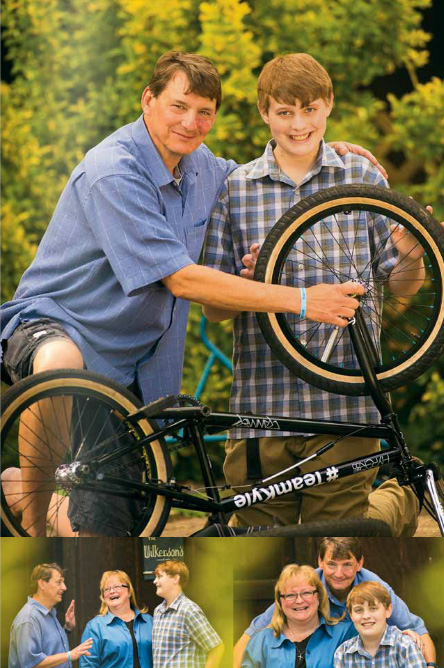 When it became clear that 15-year-old Kyle Wilkerson needed a heart transplant,
there was no question in his parents’ minds where he would have the surgery. Kyle’s
father, Randy, had received a heart transplant eight years earlier at the University of
Maryland Medical Center.
When it became clear that 15-year-old Kyle Wilkerson needed a heart transplant,
there was no question in his parents’ minds where he would have the surgery. Kyle’s
father, Randy, had received a heart transplant eight years earlier at the University of
Maryland Medical Center.
“We knew that Kyle would be in good hands with the team at the University of Maryland,” Randy Wilkerson said. His wife, Denise, added, “I always knew that Kyle was going to be all right. He was never afraid of having the transplant because he knew that Randy recovered completely and could do everything that he did before he got sick.”
It is rare for two members of the same family to undergo heart transplants, let alone a father and a son. Doctors explained that Kyle and Randy Wilkerson, who live in Pasadena, Md., share a gene that ultimately causes heart failure. Mr. Wilkerson was in his 40s when he had his transplant, so he and his wife were stunned when their normal, active teenager suddenly became ill in February 2013 and doctors told them he needed a new heart. Kyle had his surgery on April 16.
“Without the University of Maryland Medical Center, I might not have my two guys in my life today,” Mrs. Wilkerson said. “I am just so thankful that they are alive and doing well.”
Groundbreaking discoveries are being made that could change the field of transplantation based on the role that vascularized bone marrow plays in reducing the risk of rejection in recipients. These research efforts, which are made possible by US Department of Defense funding, are led by Stephen Barlett, MD, the Peter Angelos Distinguished Professor and Chair of the Department of Surgery at the School of Medicine and surgeon-in-chief and senior vice president for the University of Maryland Medical System.
Rolf Barth, MD, associate professor of surgery and director of liver transplantation at UMMC, is conducting pre-clinical research to attempt to make more organs available for transplantation.
John LaMattina, MD, assistant professor of surgery and director of living donor liver transplantation, is developing a way to strip native cells from donor livers, leaving only the scaffolding of the liver, and recellularize them with stem cells from the patient with liver failure. If perfected, this procedure could reduce deaths caused by the shortage of livers available for transplantation.